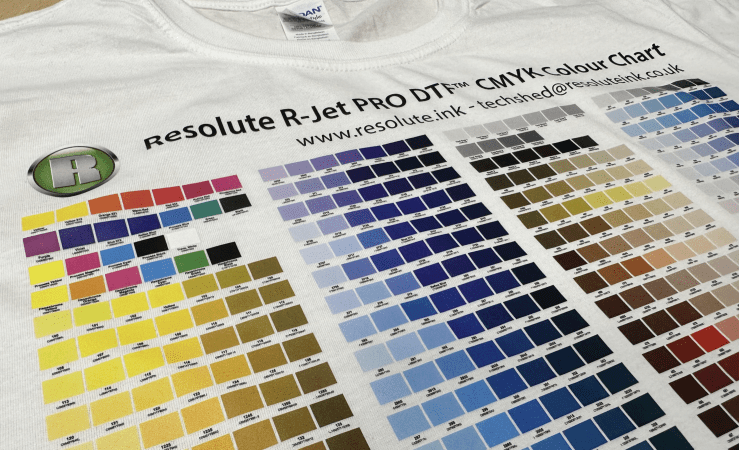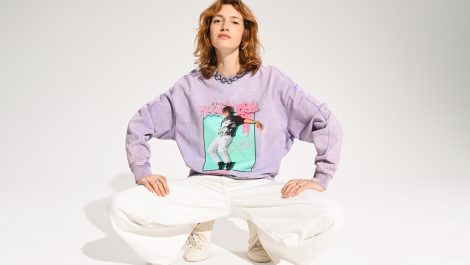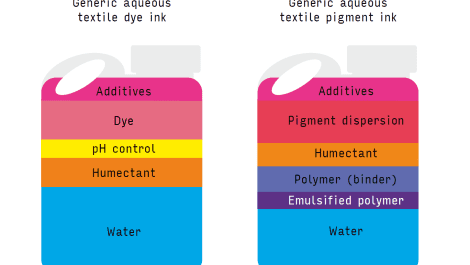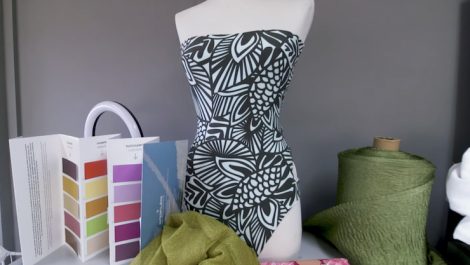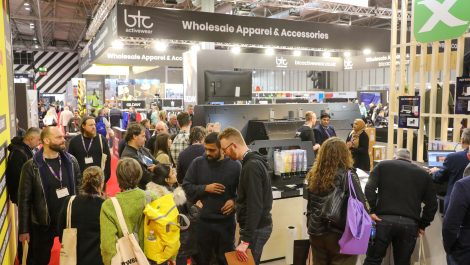In all the excitement about the versatility and cost-effectiveness of direct-to-film (DtF) garment decoration, it’s easy to focus only on the printers and to overlook the critical role of the consumables, particularly the film. Colin Marsh of Resolute DTF explains why the film matters too and how to choose the right type.
There are three main types of DtF film, but choosing the right one can be difficult. Three years ago, there was only a handful of companies manufacturing DtF films, but as the process has grown in popularity, the DtF film market has turned into something of Wild West, with hundreds of resellers all claiming to have the best offering.
Here we’ll explain in detail the different types of film and what applications and business setups they best support.
Cold peel
The original DTF film used by many, cold peel offers great vibrancy and good continuity. Most cold peel films are single-sided, meaning the coating is only present on the side that you print, allowing for a very accurate view of the colour side of the printed transfer. This can be useful if you like to get a good idea of how your transfer will look before pressing.
The best application for cold peel film is on cotton, because a higher temperature is used when pressing, and for longer periods. This makes for better durability but it does slow down production. The default procedure is to press for 15 seconds at 165C, allow to cool before peeling off the film (hence ‘cold peel’), then press for a further 5 seconds covered by silicone paper for a softer feel.
The longer press time and higher temperature cold peel film requires it is not the best choice for decorating polyester and other mixed-fibre garments. Fine detail in the print can suffer as the removal of the carrier film when cold may leave fine detail behind on the film rather than the fabric. It is however the best choice for photographic images, which generally have a solid white under-base, so potentially losing fine details at the peeling stage should not be an issue.
Hot peel
This is currently the most popular film available. Hot peel can speed up production time, especially when used with a twin platen semi-automatic pneumatic heat press. Most hot peel films are coated both sides; you can only print onto the outer coating. The underside coating is normally an anti-slip coating which avoids film skew and helps to eliminate stretch.
Depending on which fabric you are pressing the pressure, temperatures and times used vary considerably. These range from just 8s at 150C with high pressure for an ‘instant’ swift hot peel, to a couple of seconds more at the same temperature but medium pressure, with the immediate hot peel followed by a second 5s press with silicon paper for a softer feel, slowing to 15s at 130C for polyester under medium pressure, again with the optional second 5s press after peeling to improve the feel, and dropping the temperature to 105C for ‘problem’ polyesters, using sublimation blocking power too, again with a second 5s press for feel.
Pressing times when using hot peel film depend on the fabric type and knowing how much heat and time it can take. It is best to make a test garment and wash it to make sure the durability is at its best. One of the downsides to hot peel film is that because the coating has to be thicker, the film appears more opaque. This makes nozzle check patterns harder to see and the finished print is somewhat muted when viewed behind the film. You soon get used to this, however.
One size fits all?
Resolute has developed its own DTF film, launched in May 2023. Called Evo, it is designed to offer cold peel, warm peel and hot peel, all in one film. You simply use the right peel process to match the print type, so there is no need to change the roll for different types of artwork and garments, meaning less waste and no time wasted swapping rolls.
The new film blocks moisture, which allows its use in high humidity environments without powder sticking to unprinted areas. It also has anti-static properties so that use in low humidity environments – such as indoors in heated environments during cold spells in winter – shouldn’t be an issue either.
Pressing times and temperatures for Evo film are similar to hot peel types and applications, but the film also offers better fine detail performance than either regular hot or cold peel types. Its only downside is that because of the moisture-repellent property, large areas of a single flat process colour can cause a slight inconsistency in the way the ink is laid down. This typically isn’t found in most DtF work, but where it is required, a standard hot peel film will perform better.
DtF is a very fast-moving market, but as with all print, what you print on and with can make a crucial difference to the results you get and therefore the profitability of the work and your ability to win more of it.

